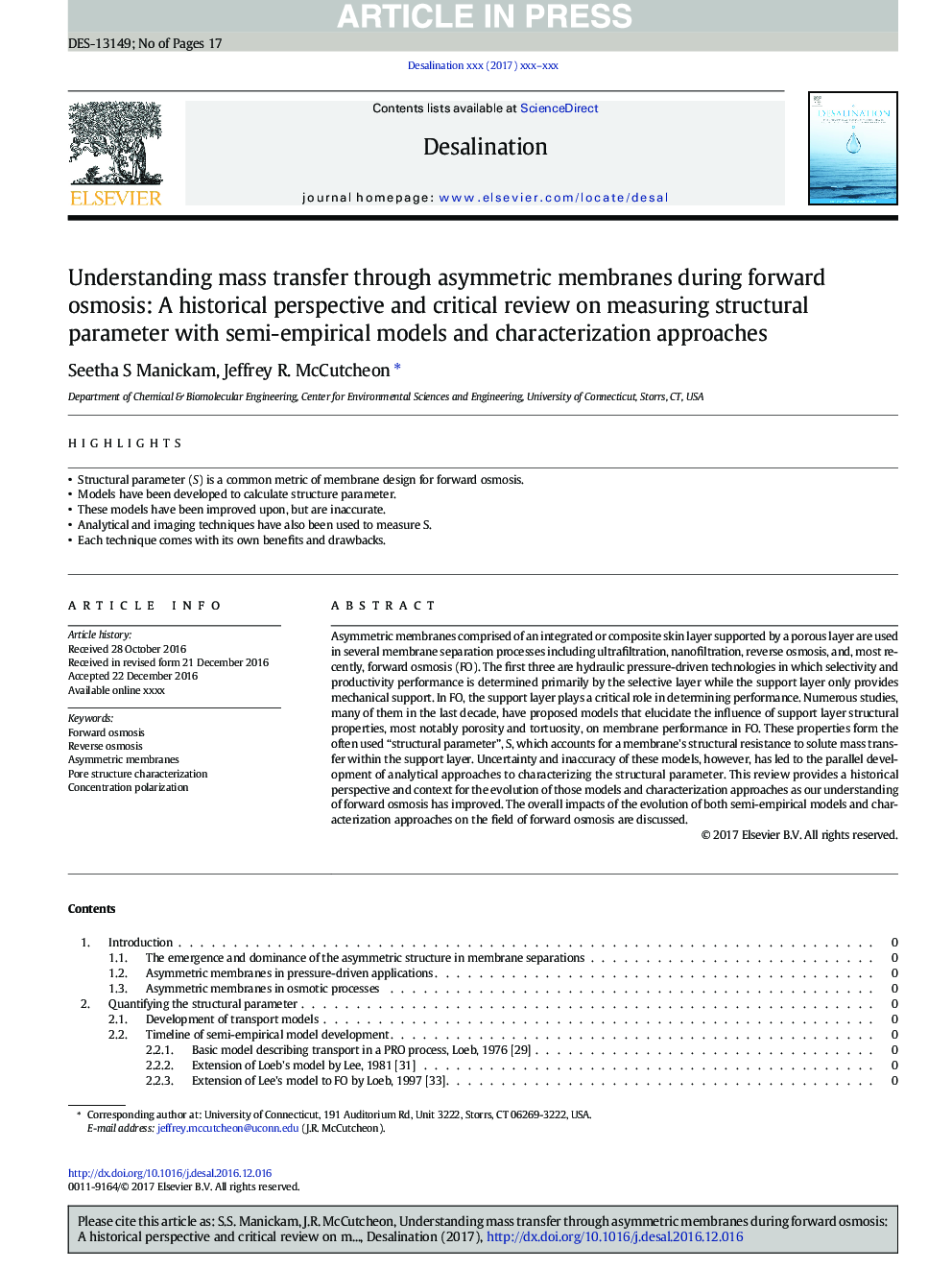| Article ID | Journal | Published Year | Pages | File Type |
|---|---|---|---|---|
| 4987573 | Desalination | 2017 | 17 Pages |
Abstract
Asymmetric membranes comprised of an integrated or composite skin layer supported by a porous layer are used in several membrane separation processes including ultrafiltration, nanofiltration, reverse osmosis, and, most recently, forward osmosis (FO). The first three are hydraulic pressure-driven technologies in which selectivity and productivity performance is determined primarily by the selective layer while the support layer only provides mechanical support. In FO, the support layer plays a critical role in determining performance. Numerous studies, many of them in the last decade, have proposed models that elucidate the influence of support layer structural properties, most notably porosity and tortuosity, on membrane performance in FO. These properties form the often used “structural parameter”, S, which accounts for a membrane's structural resistance to solute mass transfer within the support layer. Uncertainty and inaccuracy of these models, however, has led to the parallel development of analytical approaches to characterizing the structural parameter. This review provides a historical perspective and context for the evolution of those models and characterization approaches as our understanding of forward osmosis has improved. The overall impacts of the evolution of both semi-empirical models and characterization approaches on the field of forward osmosis are discussed.
Keywords
Related Topics
Physical Sciences and Engineering
Chemical Engineering
Filtration and Separation
Authors
Seetha S Manickam, Jeffrey R. McCutcheon,
